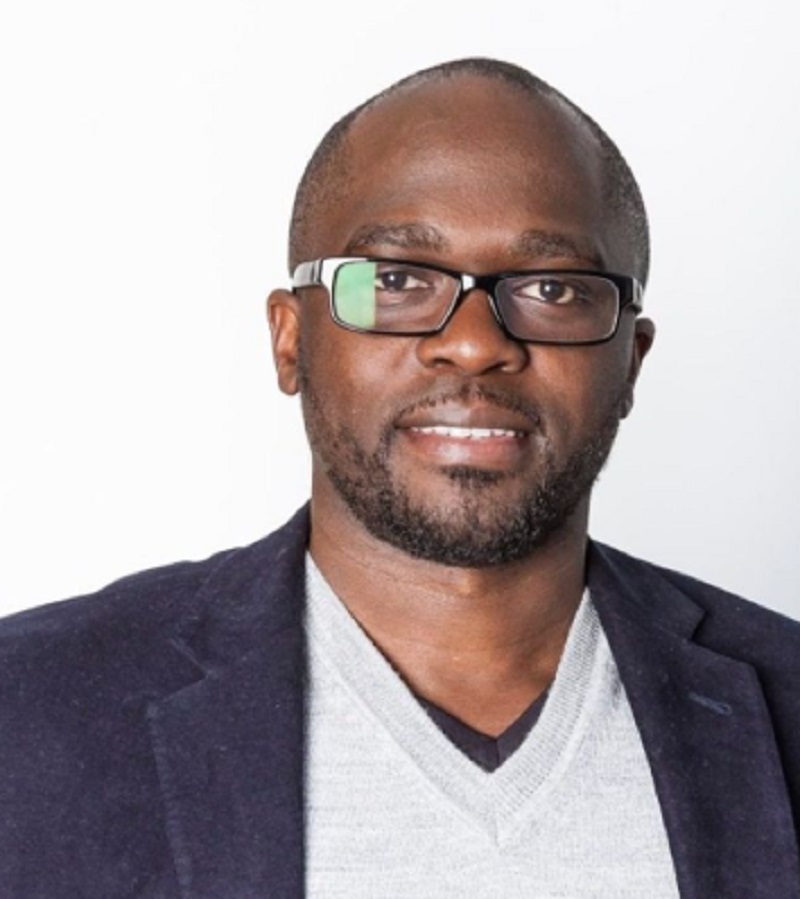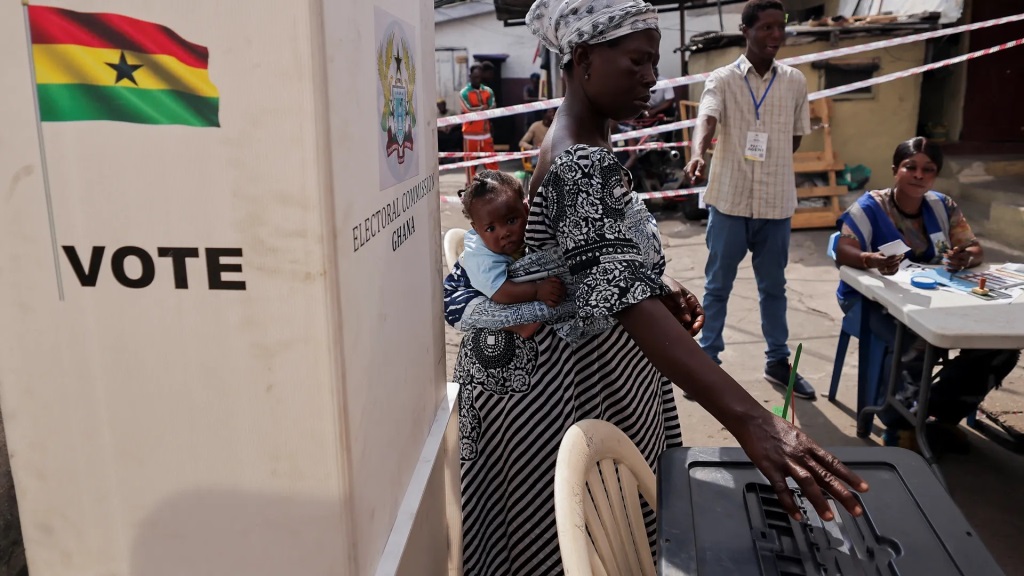Feature/OPED
The Importance of Supporting Gender Equality in the Tech Industry

While there has been headway toward greater workplace diversity in recent years, there is still much more work to be done. There is undeniably a gender divide in all businesses, and one of these historically male-dominated industries is technology.
In fact, according to Deloitte Insight, large global technology firms are predicted on average to nearly reach 33% overall female representation in their workforces in 2022. This is slightly higher than 2 percentage points from 2019.
Additionally in Nigeria, according to the National Bureau of Statistics (NBS), women make up on average just 22% of the total number of engineering and technology university graduates each year.
While the IT industry often talks about inclusion and diversity, much more work remains to be done. And, more significantly, talk must rapidly become action. Both education and inspiration are required to close the gender divide in technology.
We must provide young Nigerian females with the required skills to seek equal opportunities in the future. However, where should we begin? We spoke with industry leaders ahead of International Girls in ICT Day to hear their opinions.
Change stereotypes
With conversations on ‘jobs of the future’ happening everywhere, why does it feel like we are not making any progress that is quite definitive for everyone, questions Kuppulakshmi Krishnamoorthy, Global Head at Zoho for Startups. “Why does it look like most of the vision-and-mission statements only put ‘gender equality’ on a treadmill and also openly wonder why there are not enough girls in STE(A)M?”
“Knowing the importance of equal gender representation in tech is one thing, and doing what it takes to support, to become an ally, is an entirely different thing,” adds Krishnamoorthy. “To support gender equality in tech, the key players who have the power to propel this movement and those that can translate mere words into actions, have to have infinite compassion, and courage (born out of empathy and kindness) to constantly work on changing the stereotypes.”

With the assumption that the people in the driver’s seat of future innovation and policymaking already recognise the critical nature of gender equality in technology, Krishnamoorthy makes three recommendations for amplifying their support:
- Support equality from early on—early education on diversity and inclusion.
- Don’t just stop with being an ally. Create more allies whose words match perfectly with their actions.
- Be present, bring your own chair to the table, and be a lighthouse of a mentor.
- Invest time and money on training to overcome conscious and unconscious bias; to create more resonant leaders; to create a community of mentors and givers who passionately volunteer and train young girls; to find and bring together more people who are truly intentional and are willing to pass the baton of knowledge on.
- Create and make available a marketplace of tech tools for learning and development like robotics kits, sandbox developer platforms, etc., that help in proving that technology can be a leveller.
- Empower young girls by helping them enhance their innate emotional quotient (EQ), keeping in mind intersectionality.
“On this International Girls in ICT Day, as we act with more focus and passion, and as we reach for the stars, let’s also promise to the posterity that the magnificent future will be built on a strong foundation of equality and inclusivity.”
Society must be aware of gender biases children grow up with
“When it comes to getting more women into tech or other spaces where we are underrepresented, language and representation matter,” says Aisha Pandor, CEO of home services company SweepSouth.
“We often hear that when females are assertive they’re seen as aggressive, but when males are assertive, they’re confident. That kind of language and those kinds of stereotypes start being entrenched when kids are young and impressionable. For example, as early as at primary school, when girls are studying maths and science, it’s well reported that many don’t feel confident enough in a class with other young boys, to put up their hands to answer questions.”
Pandor adds that as a society we need to be aware of any gender biases our children grow up with, and consciously untrain them, otherwise they occur at such a formative stage of development that they become entrenched and difficult to undo. “This awareness work needs to be done with both girls and boys, without leaving either by the wayside. We also need to highlight more women in STEM (Science, Technology, Engineering, and Mathematics) in everyday life. If girls and women start seeing more women in spaces they wish to be part of, they’ll see their ambitions as relatable and achievable, and feel more encouraged to chase their dreams in this regard.”
Educate, mentor and guide
Despite our progress, there is still much more work to be done; as strange as it may sound, the gender divide in our technology business begins even before girls enter the workforce. “As is the case with many other professions, “technology” still carries many outdated stereotypes, and research indicates that girls are significantly less likely to study technology to consider a career in the sector,” says Dori-Jo Bonner, Strategist at Striata Africa.
Bonner believes this should not be the case, the youth of today has emerged in tech much more than ever before, from entertainment to education, the next generation is introduced at a young age to technology and all it has to offer.
“What young girls do not learn about are the job prospects available in the technology industry and the important need for women to be acknowledged and make a difference in this space. It is crucial that we educate, mentor, and guide young girls about these options because only through this type of mentoring and guidance can we begin to open doors to so many people whose abilities and talents are so sorely needed right now,” adds Bonner.
Break down barriers
Yes, the gender gap is everywhere. And arguably progress has most definitely been made, but there is still a long road to go. In particular, the tech industry is exploding, and the number of jobs available is growing. We need to break down barriers by providing mentors and role models who are women in technology to young girls.

Photography for Striata in Feb 2016 by Jeremy Glyn.
Feature/OPED
The Future of Payments: Key Trends to Watch in 2025

By Luke Kyohere
The global payments landscape is undergoing a rapid transformation. New technologies coupled with the rising demand for seamless, secure, and efficient transactions has spurred on an exciting new era of innovation and growth. With 2025 fast approaching, here are important trends that will shape the future of payments:
1. The rise of real-time payments
Until recently, real-time payments have been used in Africa for cross-border mobile money payments, but less so for traditional payments. We are seeing companies like Mastercard investing in this area, as well as central banks in Africa putting focus on this.
2. Cashless payments will increase
In 2025, we will see the continued acceleration of cashless payments across Africa. B2B payments in particular will also increase. Digital payments began between individuals but are now becoming commonplace for larger corporate transactions.
3. Digital currency will hit mainstream
In the cryptocurrency space, we will see an increase in the use of stablecoins like United States Digital Currency (USDC) and Tether (USDT) which are linked to US dollars. These will come to replace traditional cryptocurrencies as their price point is more stable. This year, many countries will begin preparing for Central Bank Digital Currencies (CBDCs), government-backed digital currencies which use blockchain.
The increased uptake of digital currencies reflects the maturity of distributed ledger technology and improved API availability.
4. Increased government oversight
As adoption of digital currencies will increase, governments will also put more focus into monitoring these flows. In particular, this will centre on companies and banks rather than individuals. The goal of this will be to control and occasionally curb runaway foreign exchange (FX) rates.
5. Business leaders buy into AI technology
In 2025, we will see many business leaders buying into AI through respected providers relying on well-researched platforms and huge data sets. Most companies don’t have the budget to invest in their own research and development in AI, so many are now opting to ‘buy’ into the technology rather than ‘build’ it themselves. Moreover, many businesses are concerned about the risks associated with data ownership and accuracy so buying software is another way to avoid this risk.
6. Continued AI Adoption in Payments
In payments, the proliferation of AI will continue to improve user experience and increase security. To detect fraud, AI is used to track patterns and payment flows in real-time. If unusual activity is detected, the technology can be used to flag or even block payments which may be fraudulent.
When it comes to user experience, we will also see AI being used to improve the interface design of payment platforms. The technology will also increasingly be used for translation for international payment platforms.
7. Rise of Super Apps
To get more from their platforms, mobile network operators are building comprehensive service platforms, integrating multiple payment experiences into a single app. This reflects the shift of many users moving from text-based services to mobile apps. Rather than offering a single service, super apps are packing many other services into a single app. For example, apps which may have previously been used primarily for lending, now have options for saving and paying bills.
8. Business strategy shift
Recent major technological changes will force business leaders to focus on much shorter prediction and reaction cycles. Because the rate of change has been unprecedented in the past year, this will force decision-makers to adapt quickly, be decisive and nimble.
As the payments space evolves, businesses, banks, and governments must continually embrace innovation, collaboration, and prioritise customer needs. These efforts build a more inclusive, secure, and efficient payment system that supports local to global economic growth – enabling true financial inclusion across borders.
Luke Kyohere is the Group Chief Product and Innovation Officer at Onafriq
Feature/OPED
Ghana’s Democratic Triumph: A Call to Action for Nigeria’s 2027 Elections

In a heartfelt statement released today, the Conference of Nigeria Political Parties (CNPP) has extended its warmest congratulations to Ghana’s President-Elect, emphasizing the importance of learning from Ghana’s recent electoral success as Nigeria gears up for its 2027 general elections.
In a statement signed by its Deputy National Publicity Secretary, Comrade James Ezema, the CNPP highlighted the need for Nigeria to reclaim its status as a leader in democratic governance in Africa.
“The recent victory of Ghana’s President-Elect is a testament to the maturity and resilience of Ghana’s democracy,” the CNPP stated. “As we celebrate this achievement, we must reflect on the lessons that Nigeria can learn from our West African neighbour.”
The CNPP’s message underscored the significance of free, fair, and credible elections, a standard that Ghana has set and one that Nigeria has previously achieved under former President Goodluck Jonathan in 2015. “It is high time for Nigeria to reclaim its position as a beacon of democracy in Africa,” the CNPP asserted, calling for a renewed commitment to the electoral process.
Central to CNPP’s message is the insistence that “the will of the people must be supreme in Nigeria’s electoral processes.” The umbrella body of all registered political parties and political associations in Nigeria CNPP emphasized the necessity of an electoral system that genuinely reflects the wishes of the Nigerian populace. “We must strive to create an environment where elections are free from manipulation, violence, and intimidation,” the CNPP urged, calling on the Independent National Electoral Commission (INEC) to take decisive action to ensure the integrity of the electoral process.
The CNPP also expressed concern over premature declarations regarding the 2027 elections, stating, “It is disheartening to note that some individuals are already announcing that there is no vacancy in Aso Rock in 2027. This kind of statement not only undermines the democratic principles that our nation holds dear but also distracts from the pressing need for the current administration to earn the trust of the electorate.”
The CNPP viewed the upcoming elections as a pivotal moment for Nigeria. “The 2027 general elections present a unique opportunity for Nigeria to reclaim its position as a leader in democratic governance in Africa,” it remarked. The body called on all stakeholders — including the executive, legislature, judiciary, the Independent National Electoral Commission (INEC), and civil society organisations — to collaborate in ensuring that elections are transparent, credible, and reflective of the will of the Nigerian people.
As the most populous African country prepares for the 2027 elections, the CNPP urged all Nigerians to remain vigilant and committed to democratic principles. “We must work together to ensure that our elections are free from violence, intimidation, and manipulation,” the statement stated, reaffirming the CNPP’s commitment to promoting a peaceful and credible electoral process.
In conclusion, the CNPP congratulated the President-Elect of Ghana and the Ghanaian people on their remarkable achievements.
“We look forward to learning from their experience and working together to strengthen democracy in our region,” the CNPP concluded.
Feature/OPED
The Need to Promote Equality, Equity and Fairness in Nigeria’s Proposed Tax Reforms

By Kenechukwu Aguolu
The proposed tax reform, involving four tax bills introduced by the Federal Government, has received significant criticism. Notably, it was rejected by the Governors’ Forum but was still forwarded to the National Assembly. Unlike the various bold economic decisions made by this government, concessions will likely need to be made on these tax reforms, which involve legislative amendments and therefore cannot be imposed by the executive. This article highlights the purposes of taxation, the qualities of a good tax system, and some of the implications of the proposed tax reforms.
One of the major purposes of taxation is to generate revenue for the government to finance its activities. A good tax system should raise sufficient revenue for the government to fund its operations, and support economic and infrastructural development. For any country to achieve meaningful progress, its tax-to-GDP ratio should be at least 15%. Currently, Nigeria’s tax-to-GDP ratio is less than 11%. The proposed tax reforms aim to increase this ratio to 18% within the next three years.
A good tax system should also promote income redistribution and equality by implementing progressive tax policies. In line with this, the proposed tax reforms favour low-income earners. For example, individuals earning less than one million naira annually are exempted from personal income tax. Additionally, essential goods and services such as food, accommodation, and transportation, which constitute a significant portion of household consumption for low- and middle-income groups, are to be exempted from VAT.
In addition to equality, a good tax system should ensure equity and fairness, a key area of contention surrounding the proposed reforms. If implemented, the amendments to the Value Added Tax could lead to a significant reduction in the federal allocation for some states; impairing their ability to finance government operations and development projects. The VAT amendments should be holistically revisited to promote fairness and national unity.
The establishment of a single agency to collect government taxes, the Nigeria Revenue Service, could reduce loopholes that have previously resulted in revenue losses, provided proper controls are put in place. It is logically easier to monitor revenue collection by one agency than by multiple agencies. However, this is not a magical solution. With automation, revenue collection can be seamless whether it is managed by one agency or several, as long as monitoring and accountability measures are implemented effectively.
The proposed tax reforms by the Federal Government are well-intentioned. However, all concerns raised by Nigerians should be looked into, and concessions should be made where necessary. Policies are more effective when they are adapted to suit the unique characteristics of a nation, rather than adopted wholesale. A good tax system should aim to raise sufficient revenue, ensure equitable income distribution, and promote equality, equity, and fairness.
-

 Feature/OPED5 years ago
Feature/OPED5 years agoDavos was Different this year
-
Travel/Tourism8 years ago
Lagos Seals Western Lodge Hotel In Ikorodu
-

 Showbiz2 years ago
Showbiz2 years agoEstranged Lover Releases Videos of Empress Njamah Bathing
-

 Banking6 years ago
Banking6 years agoSort Codes of GTBank Branches in Nigeria
-

 Economy2 years ago
Economy2 years agoSubsidy Removal: CNG at N130 Per Litre Cheaper Than Petrol—IPMAN
-

 Banking2 years ago
Banking2 years agoFirst Bank Announces Planned Downtime
-

 Sports2 years ago
Sports2 years agoHighest Paid Nigerian Footballer – How Much Do Nigerian Footballers Earn
-

 Technology4 years ago
Technology4 years agoHow To Link Your MTN, Airtel, Glo, 9mobile Lines to NIN
























